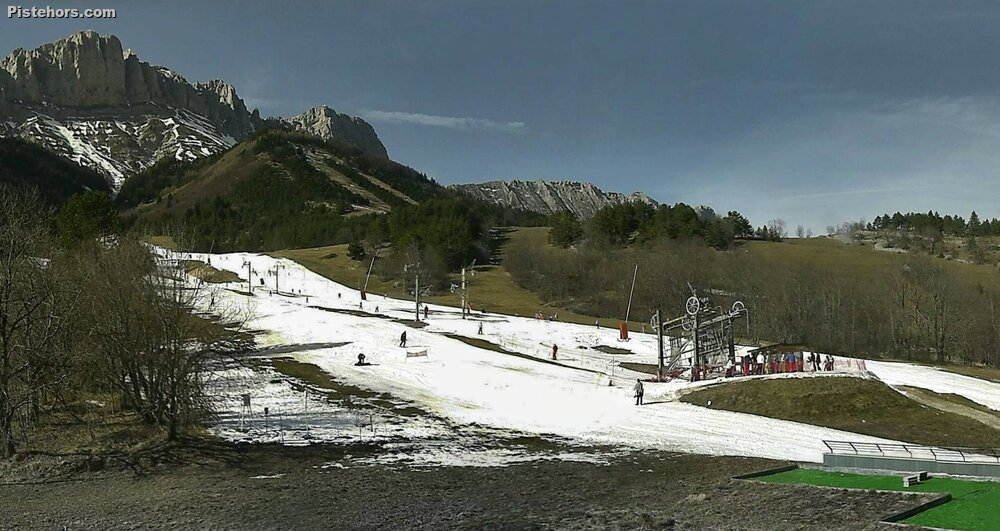The snow cover at mid altitudes in the French Northern Alps has not been as poor since the terrible winter of 1963/64. Of course back then ski resorts didn’t have snow making to get them through the bad times but there were far fewer ski areas.
 Gresse en Vercors
Gresse en Vercors
Even man made snow has its limits. Snowmaking requires negative air temperatures and the last few weeks have been too warm where the snow is most needed, at the bottom of ski runs. Temperatures at the Aiguille du Midi (3850m) at Chamonix have even above zero this February and in the valleys it is more like Spring than deep midwinter. As a result, ski areas in the Jura and Massif Central have been forced to close the majority of their runs. Things are better in the Alps but not by much with snow depths measured in the 10s of centimeters at the bottom of the slopes.
Coupled with high temperatures are two other issues for snow making. Drought. It has hardly rained (or snowed) for over a month and reservoirs are dry and the energy crisis this winter due to the war in Ukraine. Snowmaking uses a lot of power. The perfect storm, one could say.
Snow depths are normally at their maximum in the 1000 to 1500 meter range in the second half of February. Instead the mountains are green, or have a thin layer of residual snow preserved by the cold earlier in the month, but not enough to ski. “White from afar, but far from white”, as the locals say. The long range forecasts don’t see much change until the second week of March. At the Col de Porte (1350m) in the Chartreuse mountains, an altitude typical of many smaller resorts and the bottom of ski runs, there has been just 20 days of skiable natural snow this winter.